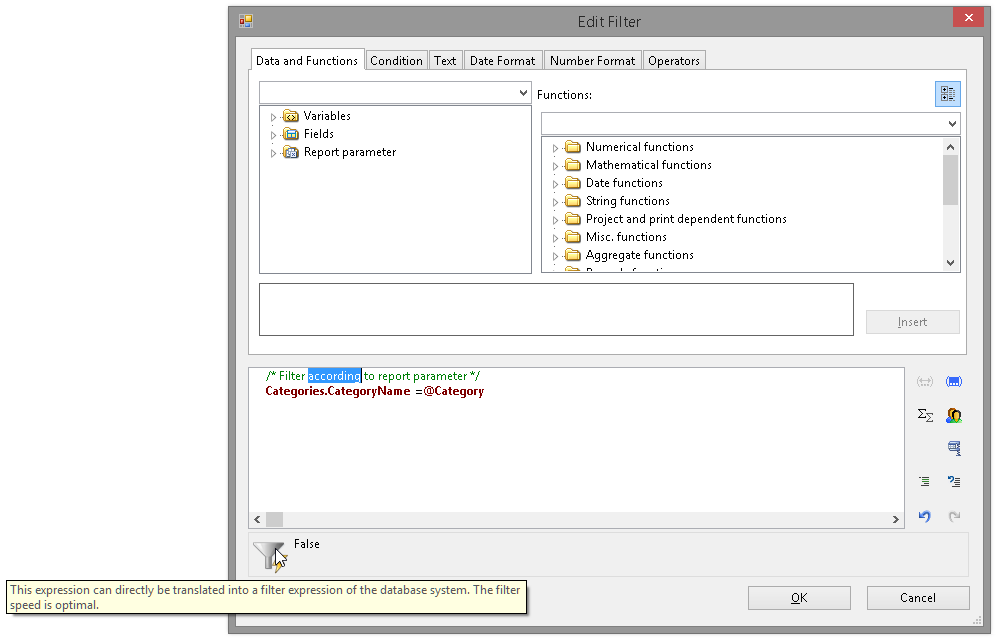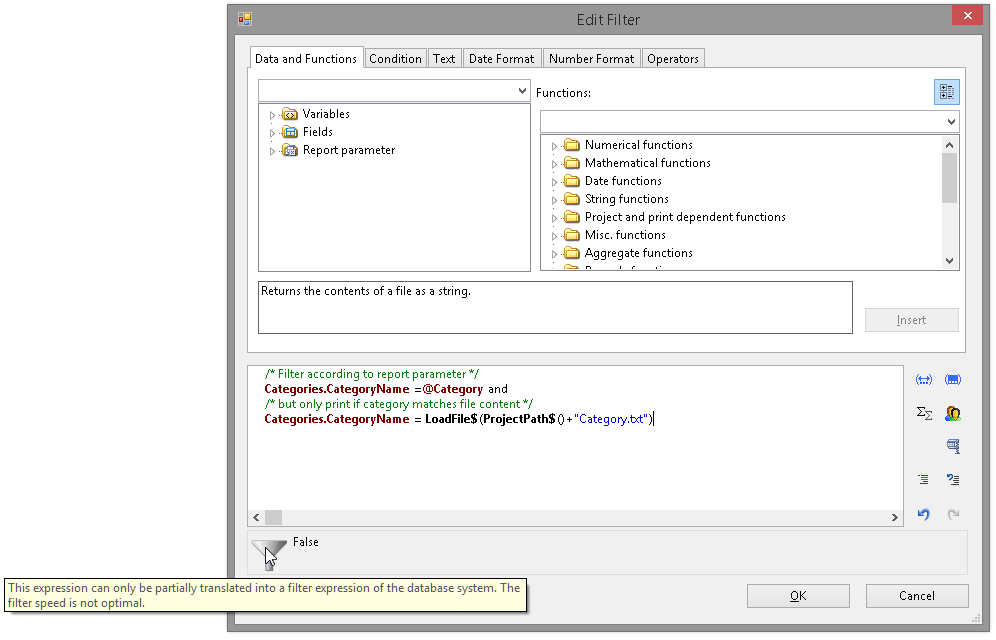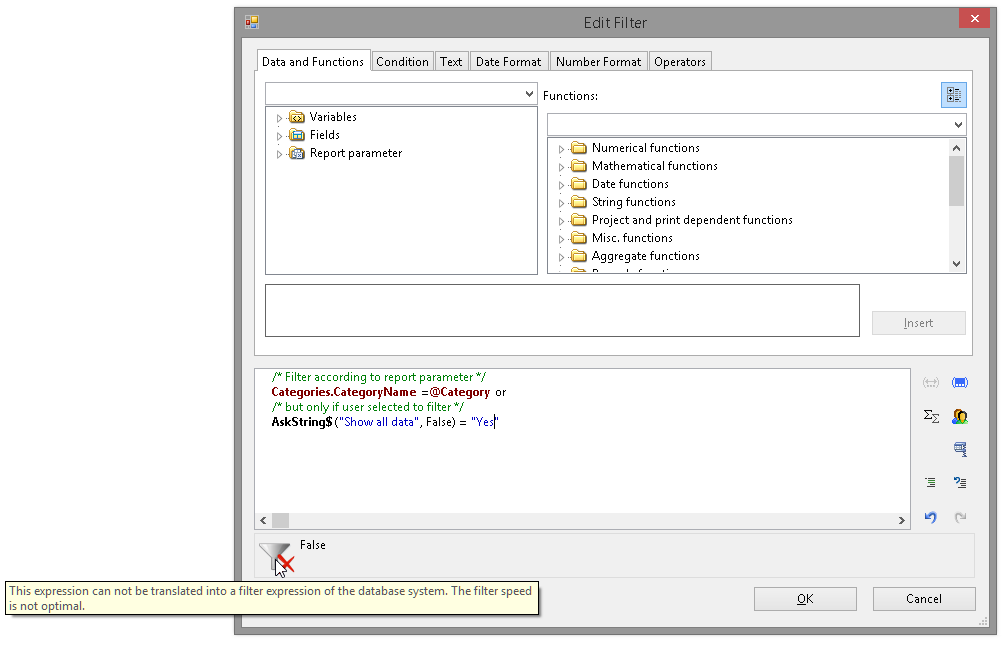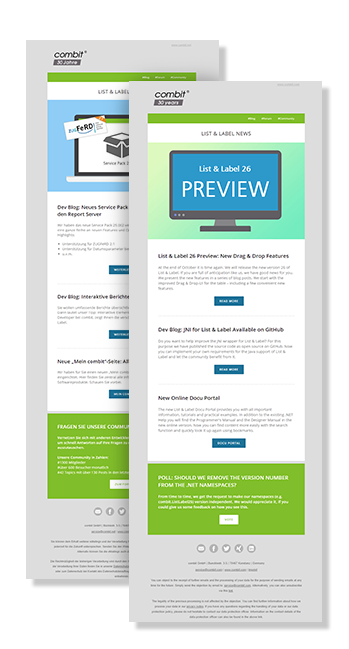This feature is supported out of the box by our .NET component. All SQL based DataProviders (SQL Server, Oracle, DB2, PostgreSQL, MySql, SQLite, RSS Bus, Firebird, NuoDB and DbConnectionDataProvider descendants) as well as the AdoDataProvider and XmlDataProvider classes offer thorough support for this feature. We’ll probably be able to add support for the ODataDataProvider as well before the release.
The syntax of a filter expression defined on a table is analyzed and translated to native statements. For SQL, of course, typical traps like SQL injection attack vectors are taken into account. The result of a translated filter is a parametrized SQL WHERE statement. The ADO.NET provider uses RowFilter functions and XML filtering is performed via highly optimized pre-compiled XPath expressions.
There are three different modes for a filter:
a) Full compatibility to database. Many of the built in functions can be fully translated to native database statements. For the SQL filters, this includes most operators and a huge number of functions (Left$, Right$, Mid$, Round, StartsWith, EndsWith, Contains, Upper$, Lower$, Year, Month, Day, Len, Empty, DateInRange, NumInRange, Artim$, LTrim$, RTrim$). Microsoft’s SQL server can support some additional date functions like AddDays, AddWeeks and the like. If a filter uses just these supported functions, it gets automatically translated to a native database query – lightning fast!

b) Partial compatibility to database. This means, a part of an expression can be translated while another part (that is concatenated with “and”) can not. In this case, the supported part is performed using native filtering whereas the unsupported part is done by the reporting engine. But it is still quite fast.
c) No compatibility to database. The filtering is performed by the reporting engine. You should try to change the filter condition to a supported syntax or do some pre-filtering beforehand.
For custom DataProvider classes, the required interfaces are documented and can be implemented quite easily.
If you’re not working with .NET, your language needs to provide support for callbacks and you need to be able to work with VARIANTs. If these features are supported, you can quite easily write your own translation for your custom database system.







